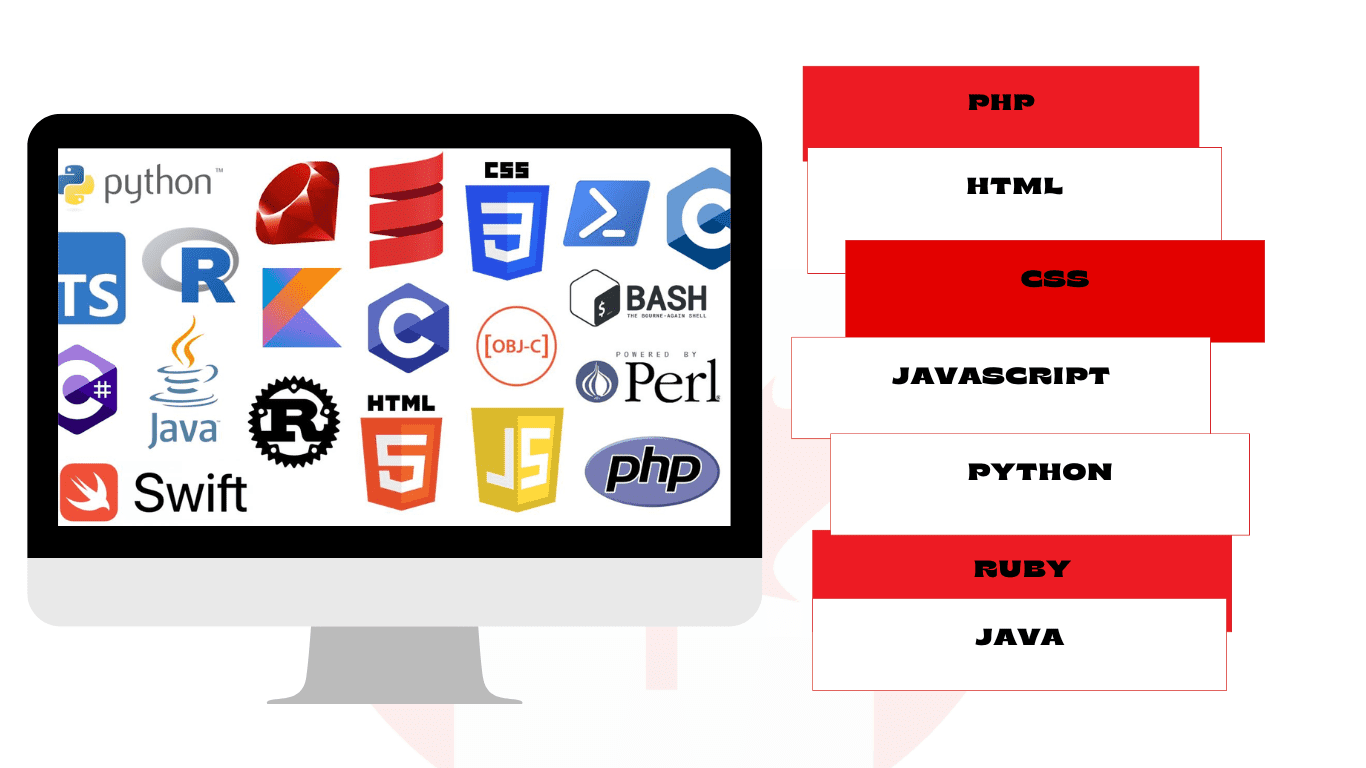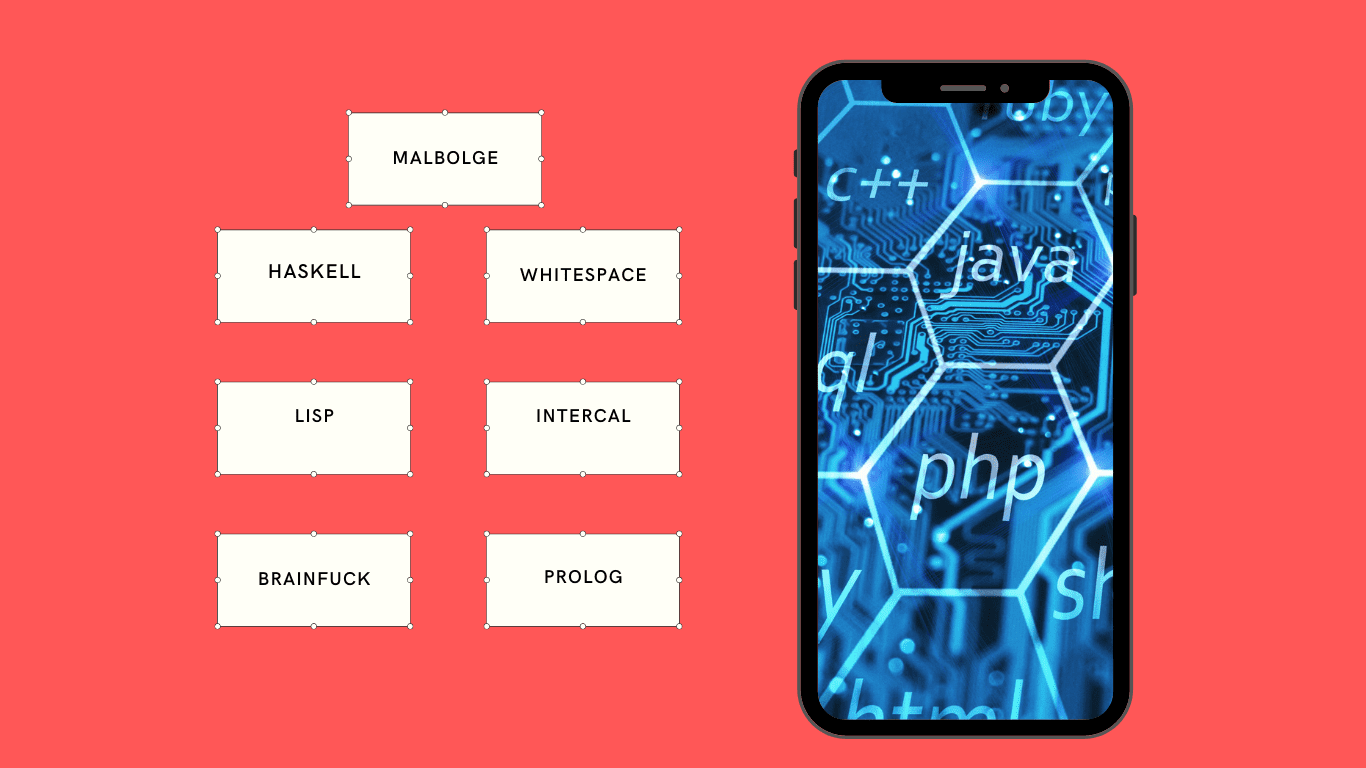A newbie who wants to learn to code will try out for the simplest programming language to get started. Modern programmers nowadays are using close to 500 different programming languages.
There are a host of programming languages – some are relatively easier to comprehend while others are more complex in nature. It’s crucial to realize that each person, their abilities, and experiences will have a different impact on how tough a programming language actually is to learn.
We attempted to rate some popular programming languages in this article from easiest to toughest. To make the most of your coding experience, let’s review their use cases and pros/cons below.
What to Take Into Account When Learning a Programming Language
Remember that learning programming language is a lengthy process that requires time and effort. The language’s utility must be considered while making the final decision. Making logical decisions using a query language and serial statements are similar to using computer programming languages, which is advantageous. The following are some of the critical aspects that the finest programmers take into account when learning a new programming language:
- Applicant’s application’s complexity
- Flexibility of a language
- Time duration of the product
- Scalability and Effectiveness
- Privacy and Security
Learning programming languages take time and effort, no matter how simple or complex it is. Therefore, it’s crucial to do extensive research and choose a programming language compatible with the job route one is resolved to pursue. Let’s focus on the factors listed below that influence the learning complexity of a programming language.
Easiest Programming Languages
- HTML
- CSS
- JavaScript
- Python
- Ruby
- Java
- PHP

HTML
HTML ((Hypertext Markup Language) forms the backbone of web development, enabling the structure of content on websites. It’s a markup language that employs a series of elements (tags) to define the structure of web pages.
Why It’s Easy to Learn: HTML’s simplicity lies in its direct and uncomplicated syntax. It revolves around defining elements and their relationships, focusing on the organization of content rather than complex logic. This straightforward approach makes it one of the easiest coding languages to learn, especially for beginners without programming experience.
Where to Learn: Aspiring learners can find comprehensive tutorials for HTML on prominent online platforms such as Codecademy, freeCodeCamp, and W3Schools. These platforms offer interactive courses and guides to help individuals grasp the fundamentals of HTML and its practical applications in web development.
Pros:
- Easy syntax and minimalistic rules make it easy to understand.
- Defines the structure of web content, facilitating organization.
- An essential skill for anyone entering the field of web development.
Cons:
- It focuses primarily on structuring content and lacks advanced programming capabilities.
- It needs integration with other technologies (CSS and JavaScript) to create interactive and visually appealing websites.
CSS
CSS stands for ‘Cascading Style Sheets’, which enhances web pages’ visual appeal and aesthetics by styling HTML elements. It’s a style sheet language that governs HTML elements’ layout, presentation, and appearance.
Why It’s Easy to Learn: CSS follows a declarative style, allowing developers to define HTML elements’ styling properties and values. CSS’s immediate visual feedback aids the learning process, making it intuitive for newcomers. Its clear rules often resemble plain English instructions, which helps in easy comprehension.
Where to Learn: Just like HTML, platforms like Codecademy and freeCodeCamp offer accessible and interactive CSS courses. These resources effectively guide learners through styling web pages, from basic concepts to advanced techniques.
Pros:
- It enhances the visual appeal and user experience of web pages.
- Changes made in CSS reflect immediately, allowing for instant feedback.
- Styles can be reused across multiple web pages, ensuring consistency.
Cons:
- It can become intricate when dealing with complex layouts or responsive designs.
- Primarily concerned with appearance rather than logic.
JavaScript
JavaScript, often abbreviated as JS, is a versatile scripting language predominantly used to imbue web pages with interactivity and dynamic features.
Why It’s Easy to Learn: JavaScript’s widespread use across the web development landscape and its multifunctional nature contribute to its reputation as an approachable language. Its syntax shares similarities with everyday language, making it more relatable for learners. JavaScript allows developers to immediately observe the effects of their code on web pages, providing instant gratification that encourages continued learning.
Where to Learn: Online learning platforms such as Codecademy, Mozilla Developer Network (MDN) Web Docs, and Coursera host various JavaScript courses catering to different skill levels. These resources encompass everything from the basics to advanced topics like front-end frameworks and libraries.
Pros:
- It enables dynamic and interactive elements on web pages.
- Widely used across websites, making it a valuable skill.
- Immediate results encourage experimentation and learning.
Cons:
- Complex applications may require careful debugging and troubleshooting.
- Improperly used JavaScript can introduce security vulnerabilities.
Python
Python’s versatility extends across web development, artificial intelligence, data analysis, scientific computing, and more. It is known for its readability and clean syntax and is a high-level programming language.
Why It’s Easy to Learn: Python’s emphasis on clear and concise code and its readability make it an excellent starting point for beginners. Its extensive library ecosystem simplifies complex tasks, enabling learners to achieve impressive results with minimal effort. Moreover, Python’s large and welcoming community ensures that help is readily available.
Where to Learn: Learners can find in-depth Python tutorials on platforms like Codecademy, the official Python website (Python.org), and edX. These resources provide a step-by-step approach to mastering Python and applying it across different domains.
Pros:
- Clean and easily readable syntax promotes code clarity.
- Used in various domains, from web development to data analysis.
- A vast community and extensive libraries simplify problem-solving.
Cons:
- Faster than languages like C or C++ for computationally intensive tasks.
- Global Interpreter Lock (GIL): Can hinder parallel execution in some scenarios.
Ruby
Ruby finds prominence in web development, particularly within the popular Ruby on Rails framework. It is a dynamic, object-oriented programming language that prioritizes developer happiness.
Why It’s Easy to Learn: Ruby’s philosophy of prioritizing programmer convenience and readability contributes to its beginner-friendly nature. Its elegant and human-readable syntax resonates with developers, allowing them to focus on problem-solving rather than wrestling with complex syntax. This emphasis on joy in coding encourages newcomers to learn and experiment.
Where to Learn: Online platforms such as Codecademy and RubyMonk offer interactive Ruby courses, guiding learners through the intricacies of the language and its application in web development.
Pros:
- It focuses on making programming enjoyable and intuitive.
- The elegance of syntax reduces cognitive load.
- Ruby on Rails framework simplifies web application development.
Cons:
- Slower than languages optimized for performance.
- While popular in web development, it’s less prevalent in other domains.
Java
Java’s versatility extends from Android app development to enterprise-level software. It is a class-based, object-oriented programming language renowned for its robustness.
Why It’s Easy to Learn: Java’s syntax is explicit and strongly typed, enabling developers to understand what each part of the code does. The language’s extensive documentation and vast community are advantageous for beginners seeking guidance.
Where to Learn: Codecademy, Coursera, and JetBrains Academy provide comprehensive Java courses. These resources offer a structured learning path, covering everything from basic syntax to advanced concepts.
Pros:
- Java’s ‘write once, run anywhere’ philosophy ensures cross-platform compatibility.
- Explicit data type declaration prevents type-related errors.
- Extensive standard libraries aid in solving typical programming challenges.
Cons:
- It requires more lines of code compared to languages like Python.
- Object-oriented concepts can be challenging for beginners.
PHP
PHP serves as a server-side scripting language for creating dynamic web pages. It facilitates server-side scripting to generate web content dynamically.
Why It’s Easy to Learn: PHP’s integration with HTML simplifies web development, allowing developers to embed PHP code directly within HTML. This approach eases the learning curve, especially for those familiar with HTML. The procedural nature of PHP also aligns with the conventional programming logic familiar to beginners.
Where to Learn: Learning PHP is attainable through platforms like Codecademy and W3Schools, both of which provide tutorials and exercises to help individuals understand the language’s concepts and apply them practically.
Pros:
- Primarily used for server-side scripting in web development.
- Coherently integrates with HTML for dynamic content generation.
- It closely resembles traditional programming logic and syntax.
Cons:
- Historically faced security vulnerabilities due to lax coding practices.
- It may not be as efficient for large-scale applications as other languages.
Hardest Programming Languages
- Haskell
- Lisp
- Brainfuck
- Whitespace
- Intercal
- Prolog
- Malbolge

Haskell
Haskell is a purely functional programming language renowned for its sophisticated type system and mathematical foundation.
Why It’s Hard to Learn: Haskell’s departure from imperative programming paradigms and advanced concepts like monads and immutability can be challenging for newcomers. The language demands a deep understanding of functional programming principles and a willingness to embrace a new way of thinking.
Where to Learn: Online resources such as HaskellWiki and “Learn You a Haskell” offer learning materials tailored to individuals interested in exploring the intricacies of Haskell.
Pros:
- A powerful type of system helps catch errors at compile time.
- It promotes a cleaner code and a less mutable state.
- Grounded in mathematical concepts and formalism.
Cons:
- Less prevalent in commercial software development.
- Non-intuitive concepts like monads and type classes can be challenging.
Lisp
Lisp encompasses a family of programming languages known for their unique focus on code-as-data and data-as-code concepts.
Why It’s Hard to Learn: Lisp’s syntax, which revolves around parentheses and manipulating code as data, presents a significant departure from conventional programming languages. This unconventional approach requires learners to adopt a fresh perspective on programming.
Where to Learn: Resources like the Common Lisp Wikibook and “Practical Common Lisp” cater to individuals keen on delving into Lisp’s distinctive paradigm and its applications.
Pros:
- A unique approach to code manipulation offers powerful capabilities.
- Well-suited for symbolic reasoning and artificial intelligence.
- Compact code due to its minimalistic syntax.
Cons:
- Primarily used in academia, AI research, and specific domains.
- It requires a shift in mindset from imperative languages.
Brainfuck
Brainfuck is an esoteric programming language intentionally designed to be minimalistic and challenging.
Why It’s Hard to Learn: Brainfuck’s minimal set of commands and lack of readability make it a puzzle to decipher. The language challenges developers to think creatively and work within stringent constraints.
Where to Learn: GitHub repositories and resources like “The Brainfuck Programming Language” provide insights into Brainfuck’s design and usage.
Pros:
- Designed as a puzzle, it encourages creative thinking and problem-solving.
- A small set of commands forces developers to use limited resources creatively.
- It strengthens mental agility through unconventional challenges.
Cons:
- Not suitable for practical applications due to extreme minimalism.
- Writing even simple programs can be painstaking and time-consuming.
Whitespace
Whitespace is an esoteric programming language that exclusively uses whitespace characters for its syntax.
Why It’s Hard to Learn: Whitespace’s unconventional syntax, which lacks visible characters, requires developers to grasp code structure through Whitespace alone. This novel approach can be particularly challenging for individuals accustomed to traditional programming languages.
Where to Learn: Resources like the “Programming in Whitespace” GitHub repository guide learners through the intricacies of Whitespace and how to write programs using this unique syntax.
Pros:
- Uses whitespace characters for syntax, providing a unique coding experience.
- Challenges conventional coding practices, stimulating cognitive flexibility.
- Focuses on the visual layout of code, encouraging creativity.
Cons:
- Relying solely on Whitespace can lead to visually cluttered code.
- Grasping code structure based on Whitespace alone can be confusing.
Intercal
Intercal, humorously referred to as “INTERCALate,” is intentionally designed to be as unconventional and confusing as possible.
Why It’s Hard to Learn: Intercal’s deliberately convoluted syntax and baffling constructs challenge traditional programming thinking. The language’s quirks and unorthodox features make it a formidable puzzle.
Where to Learn: Aspiring learners interested in mastering Intercal can explore the official Intercal website and connect with online communities dedicated to the language.
Pros:
- Designed as a parody of traditional programming languages, it fosters amusement.
- Necessitates thinking outside the box due to unconventional syntax.
- Learning Intercal can be a memorable and unconventional coding journey.
Cons:
- Primarily used for fun and intellectual challenges, not for practical applications.
- It requires unlearning conventional programming concepts.
Prolog
Prolog is a logic programming language often employed in artificial intelligence and symbolic reasoning.
Why It’s Hard to Learn: Prolog’s paradigm, based on logical rules and declarative programming, contrasts with the imperative style of most languages. Mastery of Prolog requires a firm grasp of symbolic reasoning and a willingness to dive into its unique approach.
Where to Learn: Websites like “Learn Prolog Now” and resources provided by the SWI-Prolog documentation offer pathways for learners intrigued by the logic-based world of Prolog.
Pros:
- Well-suited for symbolic reasoning, artificial intelligence, and expert systems.
- Emphasizes what should be achieved rather than how to achieve it.
- Simplifies problem-solving through pattern matching and rule-based systems.
Cons:
- Advanced concepts like backtracking and unification can be intricate.
- Primarily employed in specific domains like AI and symbolic reasoning.
Malbolge
Malbolge is an esoteric programming language designed to be exceedingly difficult to program.
Why It’s Hard to Learn: Malbolge’s convoluted design, lack of straightforward operations, and esoteric nature collectively contribute to its reputation as one of the most challenging programming languages to understand and work with.
Where to Learn: While Malbolge is primarily explored by programming enthusiasts interested in esoteric languages, online communities and resources like “A Study in Malbolge” provide insights into the intricacies of this formidable language.
Pros:
- Known for its difficulty and intentionally confusing design.
- Solving problems in Malbolge offers a unique mental exercise.
- Appeals to programmers interested in tackling extraordinary challenges.
Cons:
- Primarily used for humor, artistic expression, and intellectual curiosity.
- Limited real-world applicability due to its highly unclear nature.
Wrap Up
Simplicity and complexity coexist in programming languages, catering to diverse learner needs. Easiest languages like HTML, CSS, JavaScript, Python, Ruby, Java, and PHP provide an entry point to coding. These languages nurture logical thinking and problem-solving. Conversely, the most challenging ones – Haskell, Lisp, Brainfuck, Whitespace, Intercal, Prolog, and Malbolge – foster deep problem-solving and design awareness.
Choose wisely and embark on a coding adventure with us at Canadian Software Agency, tailoring it to your aspirations. Embrace coding’s potential, and shape the future of technology with happiness and proficiency!




